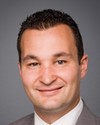Thank you, Mr. Chairman. I will split my time with Mr. Albrecht.
Thank you very much for your presentation.
I wanted to get a little more detail on some of the data that was collected, in particular in relation to overcrowded dwellings. I see your note on the bottom of the graph on page 8, stating that overcrowding equals one or more persons per room. Is that per bedroom or per room in house?



